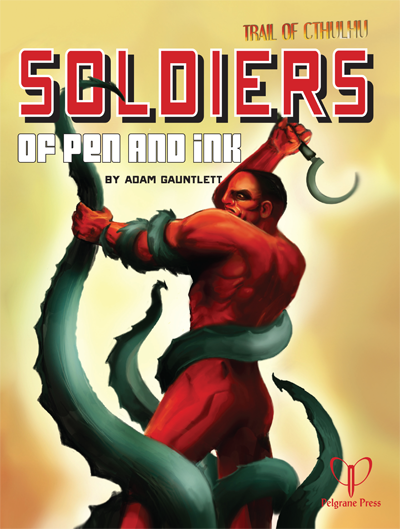News, Trail of Cthulhu
The Spanish Civil War’s Surrealist Torture Chamber
 Want to cross over from the Spanish Civil war setting of Adam Gauntlett’s Soldiers of Pen and Ink to the Dreamlands exploration of Dreamhounds of Paris? Connections abound.
Want to cross over from the Spanish Civil war setting of Adam Gauntlett’s Soldiers of Pen and Ink to the Dreamlands exploration of Dreamhounds of Paris? Connections abound.
The war takes a profound toll on Salvador Dalí, whose rightward political shift can be traced to the leftist capture of his hometown, Cadaqués. Revolutionaries destroy his home and that of his father, execute thirty of his neighbors, and, it seems, rape his sister. Given the power he amasses in the Dreamlands, might he be able to send surreal dreamforms to the real Spain to exact revenge? Your Pen and Ink characters might find themselves battling stilt-legged tigers or chest-of-drawer minotaurs.
Picasso, radicalized by the war, might to do something similar to fight for the Republican cause. His minotaurs are bigger and scarier, and you don’t want to mess with his harpies.
Surrealist painter André Masson is personally present for the siege of Barcelona and experiences a metaphysical epiphany on the mountain of Montserrat a year later. With a bit of date-squishing you could play him in a Pen and Ink campaign and then carry him over to Dreamhounds, or vice versa.
For a literal portal from one series to the next, maybe the PCs get thrown into the torture chambers described here. According to Franco-era prosecution reports discovered by a historian in 2003, an anarchist named Alphonse Laurencic constructed prison cells meant to subject prisoners to “psychotechnic” torture inspired by modernist artists. Their punishing angles and off-putting visuals supposedly broke down the wills of those held there. As did, it is alleged, screenings of Salvador Dalí and Luis Bunuel’s Un Chien Andalou.
Now, as something that actually happened, I have my doubts. Claims made by fascist prosecutors have to be taken skeptically. Maybe some form of psychotechnic prison existed. However, prints of the rarely screened Un Chien Andalou would have been extraordinarily hard to get ahold of anywhere at this time, let alone during the chaos of the civil war.
Still, let’s not allow likelihood to get in the way of a good horror story. Player characters placed in Laurencic’s cells, no doubt due to the constant inter-factional struggle on the Republican side, might not only resist their mind-bending properties. The strange geometric forms painted on the walls might shatter the resistance of their fellow prisoners. But characters already exposed to the much worse resonance of the Mythos could leverage them to their own psychic ends. They might find themselves conveyed to the Dreamlands to meet the dream forms of Dalí or Buñuel. From there a little narrative hocus-pocus might lead to one or more of the PCs joining a Dreamhounds campaign, escaping from Spain to Paris.



